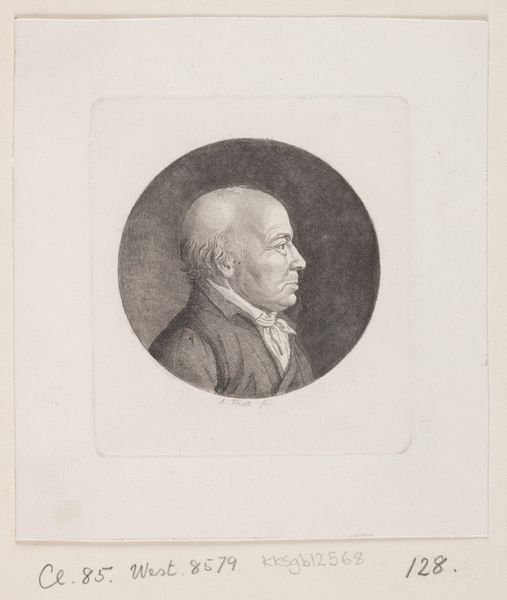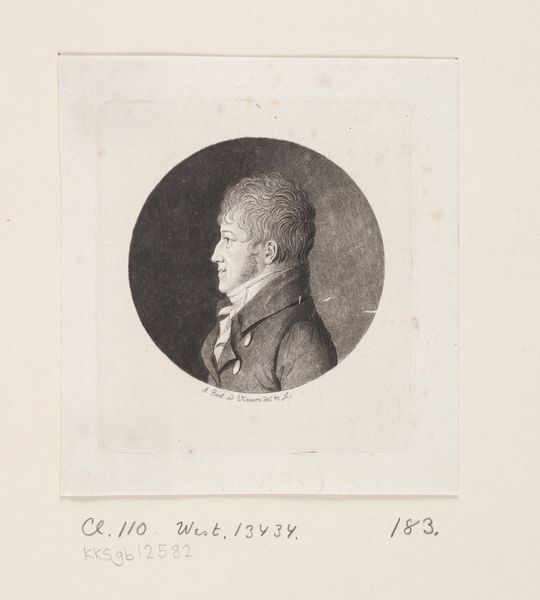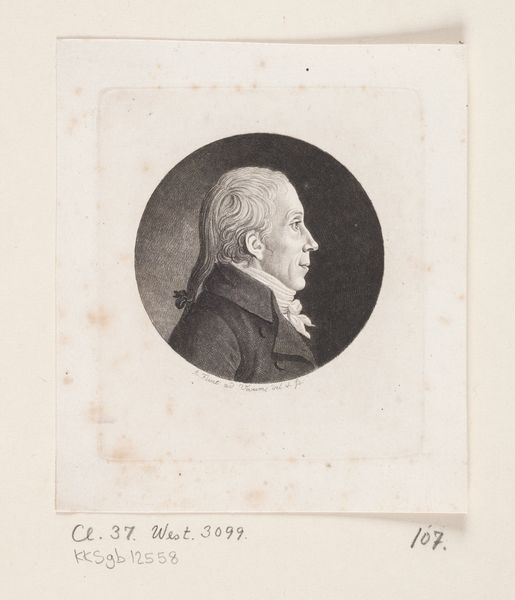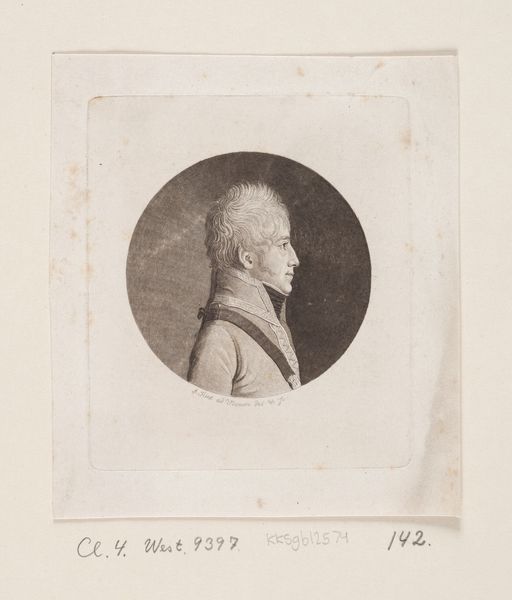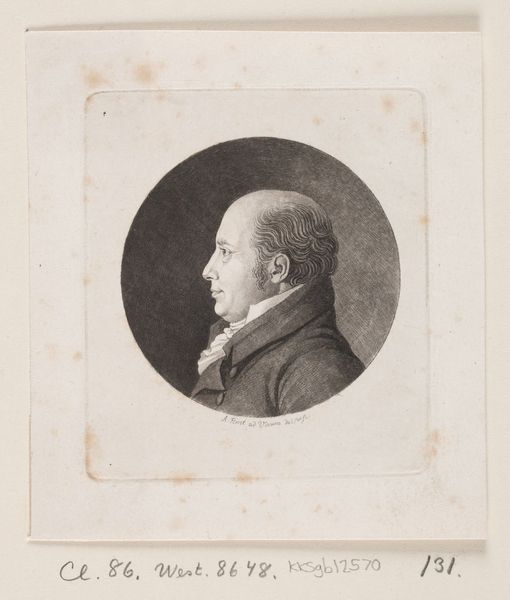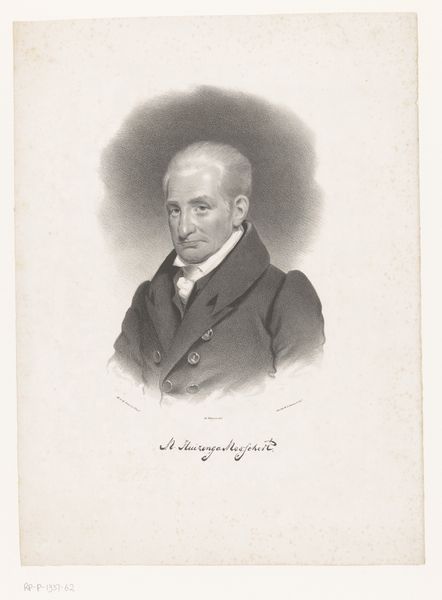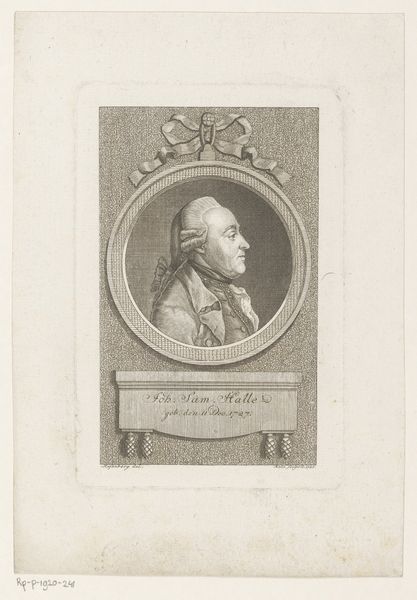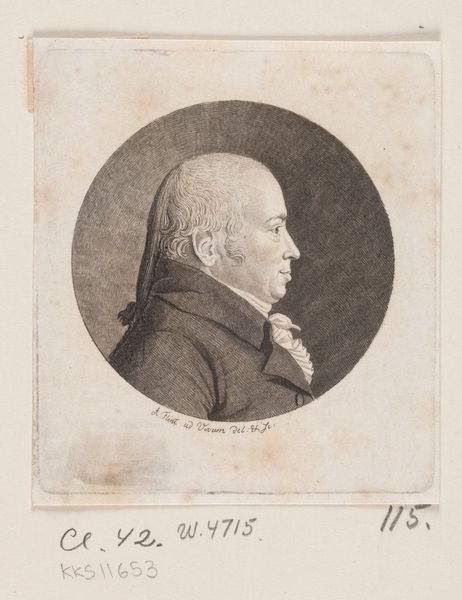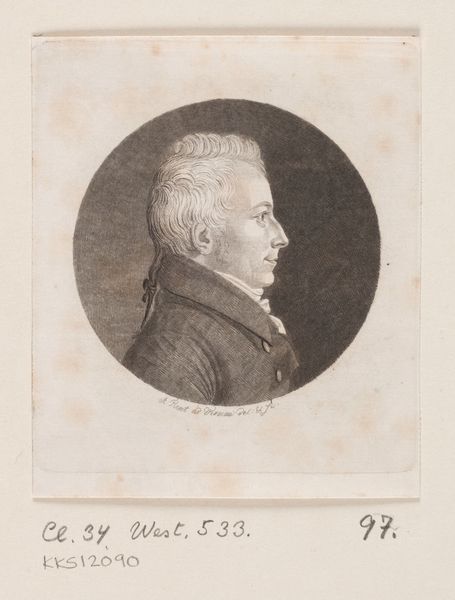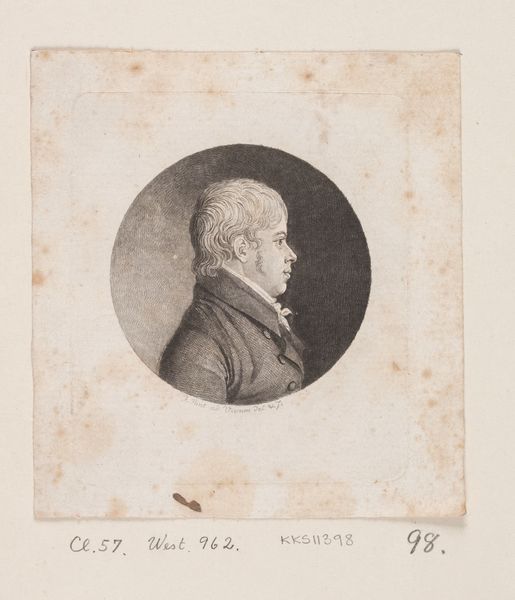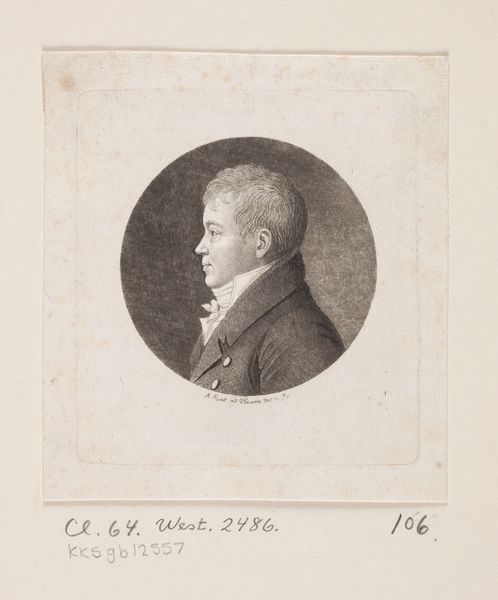
drawing, print, paper, pencil, engraving
#
portrait
#
pencil drawn
#
drawing
#
neoclassicism
# print
#
paper
#
pencil drawing
#
pencil
#
pencil work
#
engraving
Dimensions: 60 mm (None) (billedmaal), 85 mm (height) x 75 mm (width) (plademaal)
Andreas Flint created this portrait of Niels Nielsen using engraving, a printmaking technique, in Denmark sometime in the late 18th or early 19th century. Flint’s work gives us a sense of the kind of formal portraiture that was fashionable among the middle classes. Engraving had a fascinating social history. It was used for scientific illustration, maps, architectural plans, and even pornography. But here, it shows us the face of an educated member of Denmark’s bourgeoisie. The tight circular frame and the sitter's sober expression lend the image a sense of classical formality. We might wonder, what did it mean to have one’s portrait circulated in this way? Was it a sign of social mobility? Was it a sign of things to come, in terms of how we understand the currency of images today? Historians might look to sources like periodicals, letters, and inventories to reconstruct the place of images like these in the Denmark of Flint's time.
Comments
No comments
Be the first to comment and join the conversation on the ultimate creative platform.
